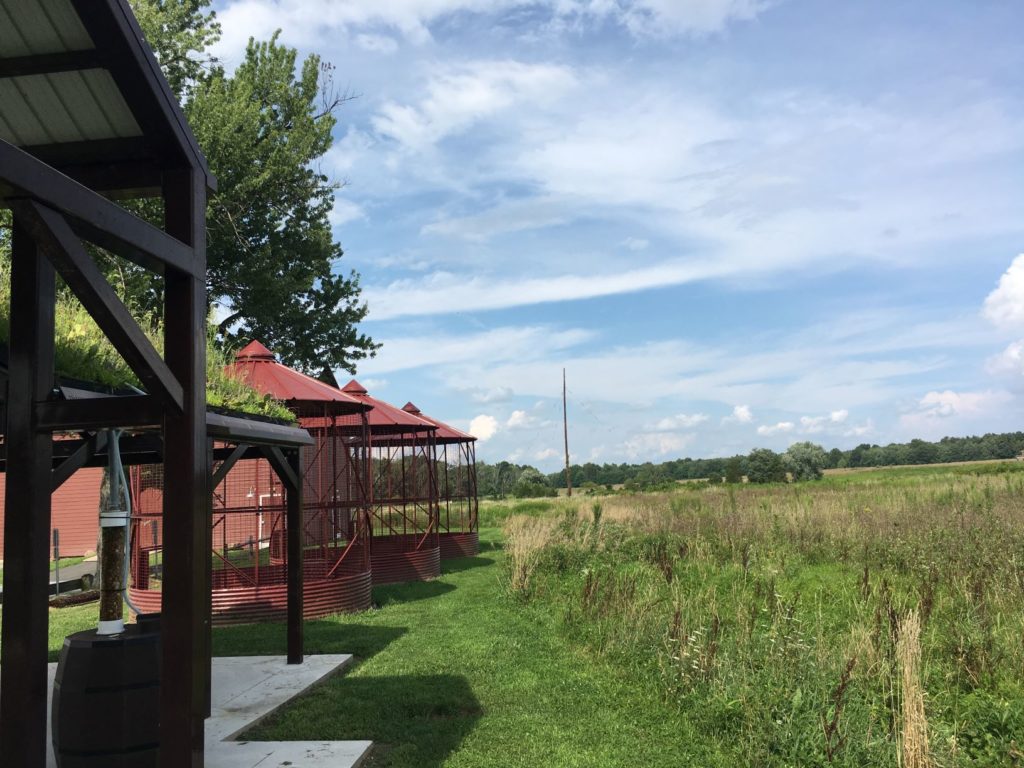

The original telephone system connected phones by copper wire strung up on poles. These “land-lines” faced a problem when confronted with obstacles like the Atlantic ocean, so it was not possible to connect the phone systems of distant countries. In the 1920s, AT&T developed a way of using short wave radio to transmit telephone signals over long distances without wires. In 1928, AT&T bought several farms in Lawrence, New Jersey, cleared the land, and began building a vast antenna array for trans-Atlantic telephone calls. The facility, officially called the American Telegraph & Telephone International Radio Telephone Transmission Station, was only responsible for calls originating in the United States. A separate facility in Netcong, New Jersey, received incoming calls from overseas.
The Lawrence station became known as the Pole Farm because the rhombic antennas that AT&T installed at the site were arranged in a diamond-shaped pattern on wooden poles up to ten stories tall. Each antenna covered 10 acres and connected New Jersey and the rest of the U.S.A. with a single city in Europe, North Africa, the Middle East, or South America. Hundreds of these poles were arranged over the 800 acre facility. Open areas between the poles were leased to farmers, who had to plow around the many antennas.
Fewer than 50 calls were made on an average day in 1929, in part because a three-minute call to England cost over thirty dollars. The station, however, allowed almost instantaneous communication across the Atlantic Ocean (once trained telephone operators had arranged the connection). By the 1960s, however, international calls were more affordable and over 16,000 telephone calls were transmitted daily through the Pole Farm.
The Pole Farm shut down in 1975, replaced by undersea cables and satellites. Where once there were hundreds of wooden poles, there is now only one. That pole, which once transmitted phone calls to Israel, survived because the farmhouse next to it used it as a lightning rod.

Two buildings, imaginatively named Building One and Building Two, bracketed the antenna field. Both buildings have been demolished, but a memorial to the facility, built over Building One, includes a large concrete and stone map set into the ground, showing the layout of the antennas around the time of World War II. Each antenna is labeled with the city to which it transmitted phone calls.

The Pole Farm is now part of the Mercer Meadows county park and features restored grasslands, nature trails, and interpretive signs.
Reference:
Yearley, Alexandra
2013 “Pole Farm” remembered in Mercer Meadows plans. https://communitynews.org/2013/02/01/pole-farm-remembered-in-mercer-meadows-plans/
1 comment